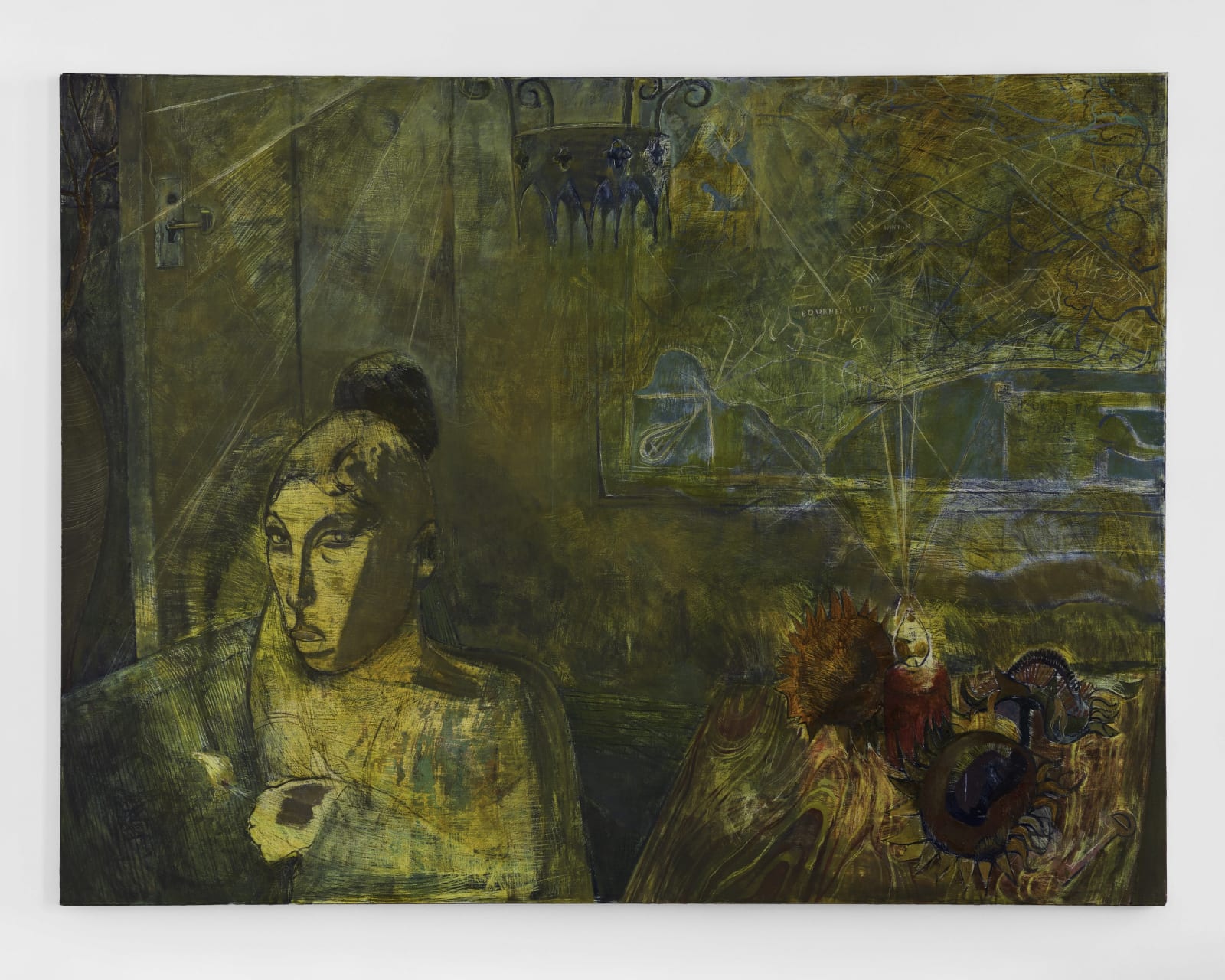To better understand how The Light the Dead See came together, we spoke with Igor Moritz about the exhibition's poetic undercurrents and his search for the image. During our conversation, Moritz shared thoughts on his process, how he thinks Sunflowers can be a bit overzealous, and about the capricious guidance from the Gods of painting.
We recently had the pleasure of welcoming you to Copenhagen for the opening of your solo exhibition. How did you enjoy your time in the city?
I had a wonderful time strolling around the lakes of Copenhagen. This city has a great charm. But, everything is suspiciously perfect. Not one bad coffee. Not one bad bread roll. There's no litter, no confusion. The buildings all know exactly where to stand. It's so perfect, it makes me believe there could be a hidden dictatorship of urban planners…I think I like it.
Your show, The Light the Dead See, is titled after a poem by the late American poet Frank Stanford. Can you tell us more about this and how it connects to your work?
I got introduced to Frank Stanford Poems by the American poet Charless Kell. His work hits me with the immediacy of a painting. It's raw image, after image, after image. What draws me to 'The Light the Dead See', is how he opens up what, by the very definition, are two polar opposites of our existence: life and death. He creates an in between for the not quite dead. In the poem, some of the dead linger on, just like they do in real life.
In your show we encounter different intimate portraits, where the sitter often seem caught in a contemplative state of mind, a kind of metaphysical pause that feels detached from “real” time. How do you capture these moments?
More than contemplation, a moment of deep thought or feeling, I am after the moments when we remember we are alive. Which, surprising enough, doesn’t happen that often. What also does not come often is the ability to get a little bit of that feeling onto the canvas. I have no idea how it happens. All I know is that if I am patient enough, the painting Gods will be kind and reveal it to me.
Your paintings are often set in interiors filled with different objects. In this exhibition, the rug, the map of London, and wooden clogs reappear. Are these objects from your life and how do they make their way into your work?
Yes, these objects are all in my studio. They are significant because I see them every day, I know them. And this knowledge allows me to use them in all these different, unconventional ways to convey meaning. Morandi’s ceramics were only special because they were the ornaments of his life.
Some works are made up of thin, almost translucent layers, painted, scraped back, and painted over again, concealing earlier stages while allowing parts of them to show through. In Walking at Night, for example, a map of London gradually reveals itself. Could you talk about this process?
The methodology of how I get the painting out varies from work to work, whether it's layering, scratching or applying thick slabs of paint. It's all done for a reason. The reason is the search for the image. I am convinced that there is a correct solution to every painting. I don't start painting with a sketch, but rather work directly onto the canvas from the subject in front of me. This always entails a very prolonged period of searching. If I could get that right feeling immediately, though, I wouldn't have to layer or scratch. Maybe I wouldn’t have to paint much at all…
Other paintings in the show, such as Sunflowers (Red) and Sunflowers (Blue) depict sunflowers in various stages. One of the smaller works is titled Słonecznik, which translates to "sunflower" in Polish. What significance does the flower hold to you?
We often associate sunflowers with joy. I’m not sure if that is due to the colour of their petals, the size of their big heads, or the fact that their name has the word sun in it.. Personally, I find the way they gleam with their bright yellow petals to be a little bit overzealous. In Poland we decapitate them in the summer and eat the seeds directly out of their heads. My mum does this while watching TV.
One of the standout works in this exhibition, The Rite of Spring, features large yellow daffodils, wooden clogs, and bunches of grapes, all set against an intricately detailed rug. On closer inspection, the composition reveals a seamless looping structure, where the top connects to the bottom, and the sides repeat in a continuous flow. Could you talk about the technique behind this structure?
When we look at the World Atlas, we know that the flatness is a representation of a threedimensional object, the Earth. To map this world onto a flat surface the cartographers use the concept of topological equivalence. I used a bastardised version of this in this painting by simply connecting the image upon the vertical and horizontal axis. This contains the painting within itself, cutting out anything beyond the edges of the picture plane. The result is a continuous loop, a birth, death and rebirth.With the daffodil, it is a cyclical eruption of spring.
30 October 2025











